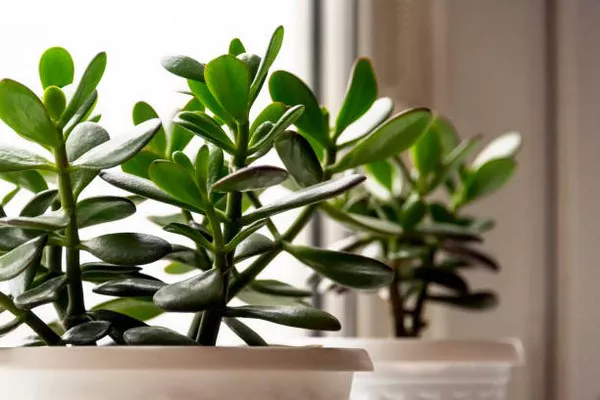Jade succulents, scientifically known as Crassula ovata, are popular houseplants cherished for their vibrant green leaves and low maintenance requirements. However, despite their hardy nature, improper watering can spell disaster for these resilient plants. Finding the delicate balance between hydration and overwatering is crucial for maintaining the health and vitality of your jade succulent. In this comprehensive guide, we will explore the best practices for watering jade succulents to ensure they thrive in your home or garden.
Understanding the Watering Needs of Jade Succulents
Before delving into the specifics of watering, it’s essential to understand the natural habitat and water requirements of jade succulents. Originating from South Africa, jade plants are accustomed to arid environments with well-draining soil. In their native habitat, they often endure long periods of drought followed by brief periods of rainfall.
As succulents, jade plants have adapted to store water in their fleshy leaves and stems, enabling them to survive in dry conditions. However, this adaptation also means they are susceptible to overwatering, which can lead to root rot and other issues. Therefore, replicating the arid conditions of their native environment is crucial for their health.
Signs Your Jade Succulent Needs Water
Recognizing when your jade succulent requires water is essential for maintaining its health. While these plants are resilient, they will exhibit certain signs when they are thirsty. Here are some indicators that your jade succulent needs watering:
1. Wrinkled or Shriveled Leaves: When a jade plant lacks water, its leaves will start to lose their plumpness and appear wrinkled or shriveled.
2. Leaves Turning Yellow or Brown: Excessive dryness can cause the leaves of a jade plant to turn yellow or brown at the tips or edges.
3. Soft or Mushy Leaves: While underwatering causes leaves to shrivel, overwatering can lead to soft, mushy leaves, indicating rot.
4. Wilting: When a jade succulent is severely dehydrated, its leaves may wilt or droop.
By paying attention to these signs, you can determine when it’s time to water your jade succulent.
Best Practices for Watering Jade Succulents
Now that we understand the water needs and signs of dehydration in jade succulents, let’s delve into the best practices for watering these resilient plants:
1. Use Well-Draining Soil:
The key to successful jade succulent care is well-draining soil. Use a specialized succulent or cactus mix, or create your own by adding perlite or coarse sand to regular potting soil.
Avoid heavy, water-retentive soils, as they can lead to waterlogged conditions that are detrimental to jade plants.
2. Water Infrequently but Thoroughly:
Instead of frequent, light watering, aim to water your jade succulent deeply but infrequently.
Allow the soil to dry out completely between waterings to prevent the onset of root rot.
Typically, watering once every two to three weeks during the growing season (spring and summer) is sufficient. Reduce frequency during the dormant season (fall and winter).
3. Water at the Base:
When watering your jade succulent, aim to water at the base of the plant rather than overhead. This helps prevent water from collecting in the center of the rosette, which can lead to rot.
Direct the water towards the soil and avoid wetting the leaves whenever possible.
4. Monitor Drainage:
Ensure your jade succulent is planted in a pot with drainage holes to allow excess water to escape.
After watering, discard any excess water that accumulates in the saucer or tray beneath the pot to prevent the roots from sitting in water.
5. Adjust Watering Based on Season and Environment:
Recognize that the watering needs of your jade succulent may vary depending on factors such as temperature, humidity, and light levels.
During periods of high heat or intense sunlight, your jade plant may require more frequent watering to prevent dehydration.
Conversely, reduce watering during cooler temperatures or if your plant is located in a low-light environment.
6. Observe and Adjust:
Pay close attention to how your jade succulent responds to watering and adjust your watering schedule accordingly.
Remember that it’s better to underwater than overwater, as jade plants are more resilient to drought than excess moisture.
Common Mistakes to Avoid
While watering jade succulents may seem straightforward, there are several common mistakes that novice plant owners should avoid:
1. Overwatering: One of the most common mistakes is overwatering, which can lead to root rot and ultimately the demise of the plant. Err on the side of underwatering rather than overwatering.
2. Watering on a Schedule: Avoid watering your jade succulent on a strict schedule. Instead, assess the moisture level of the soil and water only when necessary.
3. Using the Wrong Soil: Using soil that retains too much moisture can suffocate the roots of jade plants. Ensure you use a well-draining soil mix tailored for succulents.
4. Ignoring Drainage: Proper drainage is essential for the health of jade succulents. Always plant them in pots with drainage holes and remove excess water from the saucer or tray.
5. Watering the Leaves: Watering the leaves of a jade succulent, especially in humid environments, can increase the risk of fungal diseases. Water at the base of the plant to avoid wetting the foliage.
Conclusion
Proper watering is fundamental to the health and longevity of jade succulents. By understanding their natural habitat, recognizing signs of dehydration, and following best practices for watering, you can ensure your jade plant thrives in your home or garden. Remember to monitor environmental conditions, adjust watering accordingly, and avoid common mistakes to promote optimal growth and vitality in your jade succulent. With the right care and attention, your jade succulent can be a beautiful and enduring addition to your plant collection.


